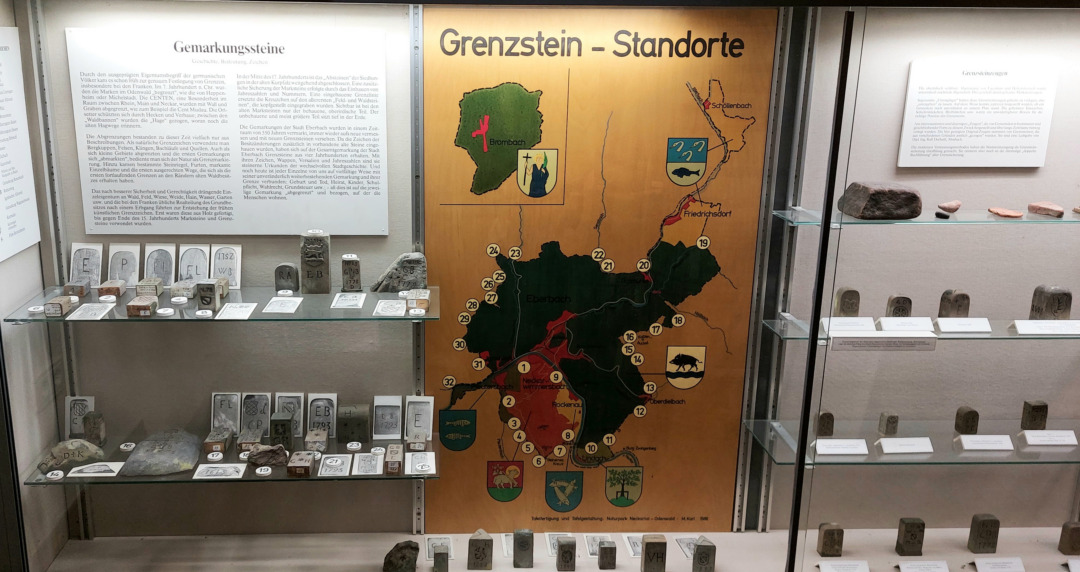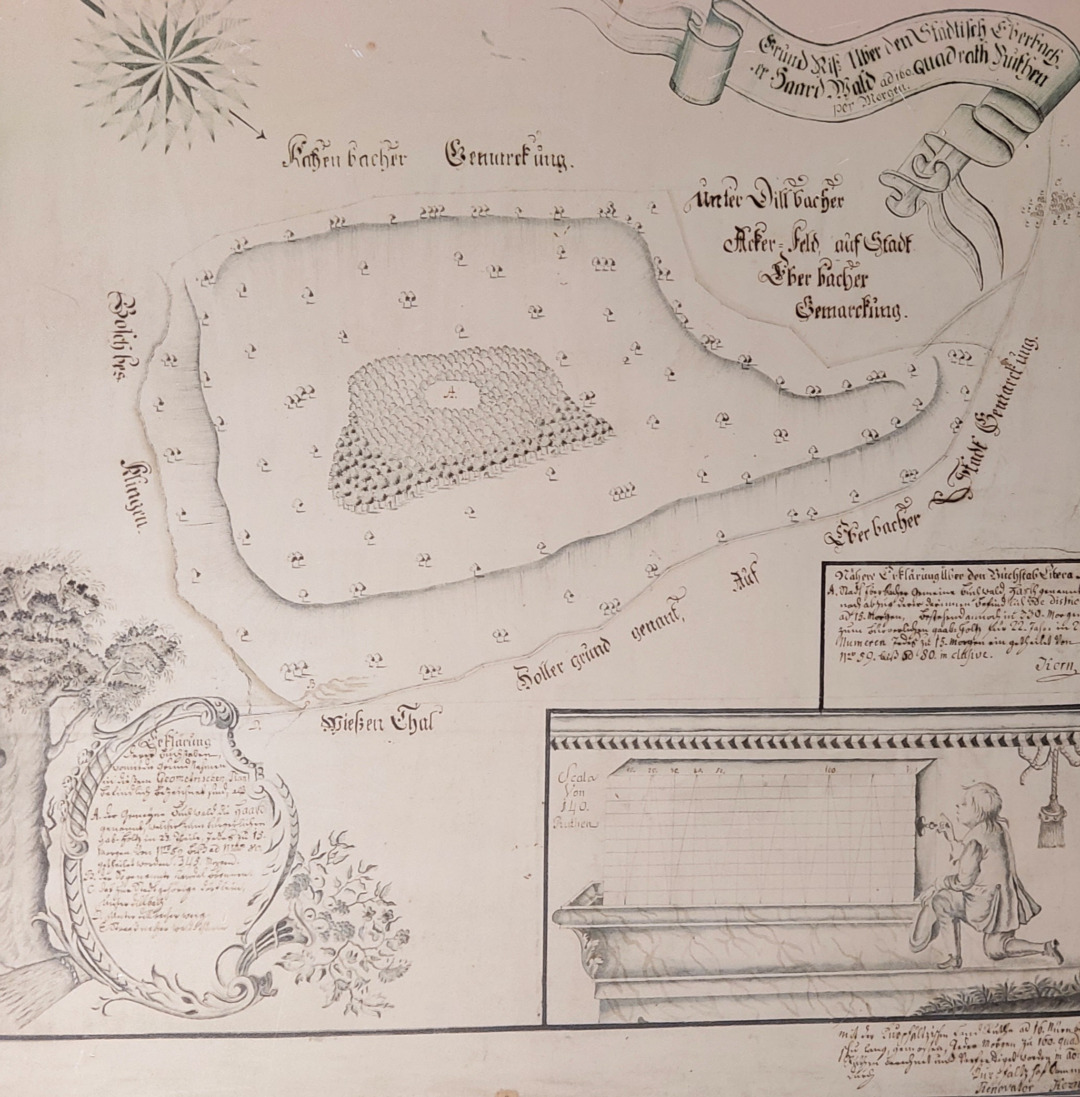
The collection of boundary stones in the Eberbach district provides an overview of the entire territory. Boundary stones are symbols of sovereignty of the respective land owners and important signs of ownership. In Eberbach, the boundaries of the district were usually also boundaries between counties, principalities, between the Electoral Palatinate and Electoral Mainz, and later the Grand Duchies of Baden and Hesse. With their help, people tried to prevent criminal border changes in the old days.

The exhibited models of sovereign stones were made by Heinrich Spohr (1897-1985), the father of the artist Hanna Breidinger-Spohr. Spohr was a master tailor by profession. It was his hobby to look for boundary stones. He therefore kept up a long correspondence with municipal archives. He was interested in the exact boundaries of the Eberbach estates. He also wanted to clarify existing discrepancies. He searched for the stones on site in fields and forests and transferred his findings to topographical maps. He also found smaller monuments similar to boundary stones and atonement crosses. He then carved a replica of the boundary stones from cedar wood on a scale of 1:10. He even built replicas of "Lagersteine", boulders on which national emblems were affixed. Spohr showed his boundary map to the public only once, at the Eberbach Cuckoo Market in 1967. 32 cedar models were created and entered on his map. There are 46 on display.

On the walls are reproductions of the oldest forest maps of the Eberbach forest. They were drawn up during the Electoral Palatinate forest inventory of the years 1778 to 1795. For comparison, a forest location map from 1986 can be seen for the inventory at that time.